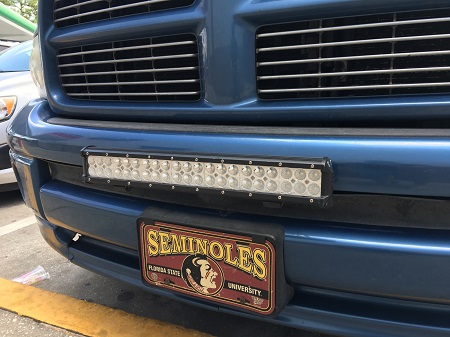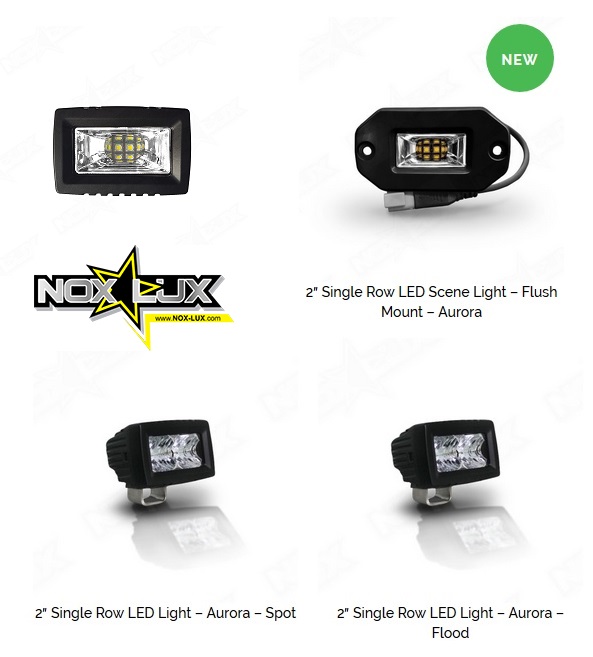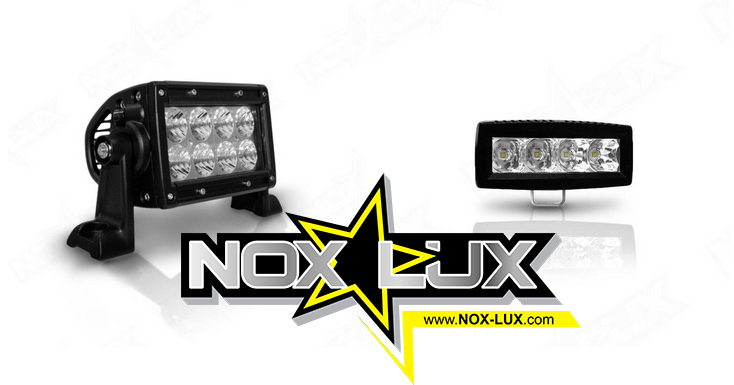Are you new to off-roading? If so, do you know which types of auxiliary automotive lights would work best for you and your rig?
In case you did not know, there are many different options to choose from in terms of automotive lights, especially for use in off-road applications. In this article we are going to cover the history and evolution of the different types of automotive lights from Tungsten Vacuum Lights, to Halogen Lights, to HID/Xenon Lights, to HPS/LPS Lights, to automotive LED Lights, to the newer automotive OLED technology, and the all new automotive laser lamp systems.
As there is a large number of criteria to take into consideration when choosing your next set of off-road lights, we simply wanted to take the time to briefly go over the different types of automotive lighting, the history of, the pros and cons of each, to ultimately give you all the information you should need to make the best decision when it comes to purchasing a set of premium off-road lights that will work best for your specific situation(s). Some of the factors you should take into consideration when reviewing and purchasing off-road lights could be- what type of rig or ride you have, the types of “off the beaten path” driving you like to do, what types of lights you think would work best for you in respect to functionality, are they for work or play, overall performance, and of course, aesthetically speaking.
Please continue reading to find out more information on which automotive off road light system would work best for YOU!
Compare Automotive Lights for Off-Road Use
History of Automotive Headlights and Headlamps
History of Oil and Acetylene Lights-
Oil and acetylene lights (Ahh fire powered lights, the original off-road light 😉 )were the first type of automotive headlights and they were first used in the 1880’s. These types of automotive headlights were extremely cost prohibitive due to the high cost of the fuel to power them. However, these lights were functional for their time as they ran on acetylene and oil, making them practically weather and wind proof.
Traditional Tungsten Vacuum Lights
The History of Tungsten Filament Automotive Lights
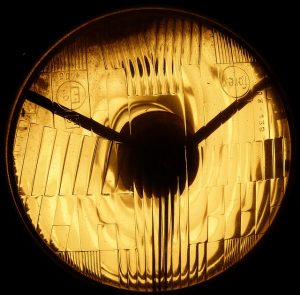
The first electric headlamp was produced in Hartford, CT in 1898 by the Electric Vehicle Company, and produced for their Columbia Electric Car as an optional upgrade. It took about 10 years for the newer automotive electric headlamp to become popular.
This is due to the fact that the quality of the filaments in these days were not durable or long lasting, could not withstand wear and tear of driving in the elements, and the electrical systems needed to power the lights were excessively large and far from efficient.
The first ever low beam/dipping light was created in 1915 by the Guide Lamp Company, with the first dual function headlight with both hi and low beam capabilities first being introduced to the world in 1924, named the Bilux bulb. Up until then, drivers either had to step out of their car to manually change the beam, unless you drove a 1917+ Cadillac, as they were the first car manufacturer to implement a simple lever system inside of the vehicle to switch between beams. 3 years later in 1927 the first ever foot operated hi/lo beam switch was developed and implemented in most vehicles there after.
General Automotive Headlight FYI-
- The standard 7 inch round sealed headlights were the standard for the US for the longest time from 1940 up until the 70’s.
- Automatic on and off headlights were first developed n the mid 1960’s.
- Cadillac was the first auto manufacturer to successfully mass manufacture an electric headlight that was practically impervious to rain, snow, and harsh driving and weather conditions.
- Cadillac introduced the first auto hi/lo automotive lighting system in 1952, called The “Autronic Eye”.
- The first ever manual headlamp leveling system was developed in 1948 by automaker Citroen. The first automatic headlamp leveling system was developed in 1954 by Cibie, and installed on the Panhard Dyna Z.
- The first ever directional headlight system was developed in the 1930’s.
Over the years we have made considerable advancements with automotive headlight and off-road lighting technologies, their components, and the systems that power them. Some of the latest breakthrough’s in these industries being new and improved HID and LED systems and components, advanced front end lighting systems, intelligent light systems, adaptive headlight technologies, glare free, pixel light, laser powered automotive lights, HALO lights, RGB and color changing lights, wireless controlled auxiliary lights,…
So, as we are all familiar with the old fashioned or at least outdated traditional automotive tungsten light systems, these old school lights are far from effective or efficient when compared to the newer Halogen, HID, HPS/LPS, or LED automotive lighting systems. These types of automotive off-road lights produce a tremendous amount of excess heat, generate a weak light beam, tend to yellow over after extended use as the tungsten filament is vaporized, and they typically only last about 2-3,000 hours.
Sources:
1-https://en.wikipedia.org/wiki/Headlamp
2-http://www.autoevolution.com/news/history-of-automotive-headlamps-from-acetylene-to-leds-4485.html
Halogen Lighting for Off-road Use
History of Automotive Halogen Lights
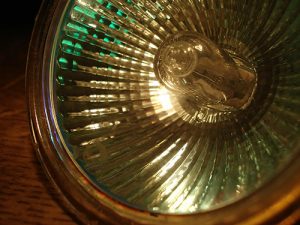
The first tungsten-halogen headlamp(also called “quartz-halogen”, “quartz-iodine”, “iodine cycle”) was officially unveiled in 1962 in Europe by a consortium of European headlamp and bulb manufacturers. These halogen lights quickly gained in popularity and became mandatory in several countries except the United States, of which, used non-halogen sealed lamps until 1978.
The automotive halogen light is very similar to the traditional tungsten vacuum light, except for the fact that it is much smaller, much more efficient, and typically longer lasting. Automotive Halogen lights work by basically vaporizing the iodine or bromine within the bulb, which in turn, coats the tungsten filament so it lasts longer than that of a traditional tungsten automotive bulb. Over the years these types of automotive halogen-tungsten sealed headlights are also starting to phase out as more and more vehicles use halogen bulbs versus that of the entire sealed halogen headlight unit.
That being said, Halogen headlights (bulb version) are still some of the most popular types of automotive headlights, with most automakers still utilizing them on their latest models.
(HPS)High Pressure Sodium Lights
General Info About High Pressure and Low Pressure Sodium Lights
High pressure sodium lights or HPS lights are another less common option for automotive lighting. These are the lights that you see that have that bluish/purplish tint to them, also commonly found in street light applications. The HPS lights are extremely efficient and generally last around 10,000 hours but the color temperature of these lights is far from natural, often causing your eyes to strain and work harder than necessary while watching for obstacles and hazards. There are also LPS light systems, or Low Pressure sodium lights that produce an amber color light with upwards of 50-100% more light per watt than that of the HPS, while lasting upwards of 18,000 working hours. Both of these automotive lighting systems for off road use require a light ballast and time to warm up before they turn on to their full capacity. (NOTE: These lights are not as popular within the automotive markets, but at least you know the difference).
Off-road HID/Xenon Lights
History of Xenon Gas High Intensity Discharge Lights-
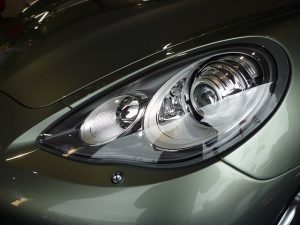
Xenon lights or HID lights- High Intensity Discharge lights operate very similar to that of High Pressure Sodium lights, although they are not as efficient. HID lights are very popular in high end luxury cars, trucks, SUV’s, and in off-road applications. Xenon High Intensity Discharge lights also require a ballast and need warm up time similar to that of HPS and LPS lights. The way HID lights work is that the xenon gas assists with getting the lights started and warmed up, then the metallic halides take over to produce high intensity lighting that has a much more comfortable color temperature than that of the HPS or LPS lighting. The very first model vehicle to implement a HID Xenon light system was the 1991 BMW 7 Series, which helped HID systems gain traction and popularity over the years with in the luxury vehicle and off-road vehicle industries.
HID Off-road Lights are still fairly popular and widely accepted in many of the different sub sets of the off-roading culture and communities. Some of these people prefer off-road HID lights over high quality Halogen bulbs and performance grade off-road LED lighting systems for a long list of reasons. One of the biggest reasons typically being based off of the “mis-information” put out that all HID xenon lights are more powerful than any other type of automotive lighting system, which is not the case at all. HID lights are very powerful lights, but they are extremely expensive to maintain and replace, they only last a fraction of the life span of an off-road LED light, as well as they require a warm up time before they operate efficiently at 100% capacity.
LED Off-road Lights- Light Emitting Diode
History of LED lights
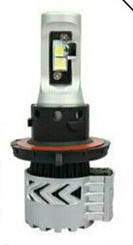
LED technology believe it or not, has been around since the 1960’s. However, back in this time, the technology was very new and could only produce the lower color frequencies of the red color spectrum. Fast forward 30+ years later to 1994 when Shuji Nakamura of Nichia Corporation was able to crack the proverbial code of current LED technology by developing the world’s first blue LED.
From here, scientists understood that it was possible to create high performance LED’s in bright white by implementing a phosphor coating to the blue LED’s, which in turn, transferred through the other spectrum’s of light color frequencies, ultimately projecting out a beam of what appears to be vivid white light to the naked eye. Isamu Akasaki, Hiroshi Amano and Nakamura were later awarded the 2014 Nobel prize in physics for the invention of the blue LED and other contributions to the furthering of LED lighting technology.
Timeline of Automotive LED Lights-
- Automotive LED lighting technology has been under vigorous development since 2004.
- 2004 marks the first year a production vehicle hit the market with automotive LED lighting installed. The Audi A8 W12 was the first car to implement LED daytime running lights.
- Lexus was the first automaker to come to market with the first LED low beam headlight installed on a production vehicle. In 2006, the Lexus LS 600h was slated for LED headlights in the 2007 and 2008 models.
- 2007 marks the first year of the full LED head light when Audi hit the market with their full LED headlamps installed on their v10 Audi r8.
- The first vehicle in the US to have all LED head lights was the Cadillac Escalade Platinum series.
- 2011 marks the first year intelligent and adaptive LED High Performance headlights were introduced to the market installed on the 2011 Mercedes-Benz CLS.
- In 2012 BMW launched the first mechanically controlled LED glare free headlamps on their BMW 7 Series.
- In 2013 Audi came to market with the first ever, digitally controlled, full-LED glare-free adaptive high beam on the all new Audi A8.
https://en.wikipedia.org/wiki/LED_lamp
Automotive LED lighting is by far the most efficient option when it comes to selecting the best off-road lighting systems for your vehicle. The light emitting diode uses less energy, does not require a ballast, there is no warm up period, the lights last up to 50,000+ hours, and they will actually end up saving you more money in the long run especially when you take into consideration replacement costs compiled with cumulative operation expenses.
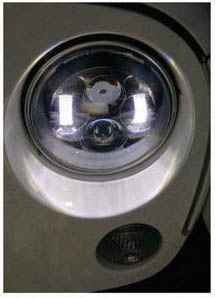
LED off-road lights can come in a number of colors and color temperature options, have the capabilities to operate in different lighting functions and beam patterns, and have the overall flexibility to be used in a wide range of on and off-road applications.
In short, when compared to the other types of automotive lighting options for off-road applications, the light emitting diode option is by far the best choice in terms of durability, reliability, performance, and lifespan of the product.
Why LED Lights Work Best for Off-roading
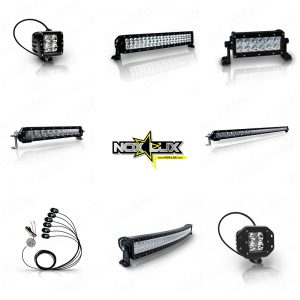
As highlighted above, LED lights are the most efficient and effective automotive lighting when it comes to a perfect balance of performance, reliability, durability, and lifespan of the off-road LED light itself.
When compared with the other types of automotive lighting the only area where LED’s can sometimes fall short is to some performance HID off-road lighting systems. HID lights are known to produce a more powerful beam of light when compared to other types of off road lights, with the downsides of HID xenon lights being that they need time to warm up, their considerably short lifespan, and the high cost associated with replacement and maintenance costs of on and off-road HID lights.
Traditional tungsten, tungsten halogen sealed lights, and halogen bulbs typically do not stack up in terms of performance, reliability, durability, and life of product when compared to that of a premium grade off-road HID light or off-road LED lighting system. NEXT… 😉
LED Off-road Lights are a bit different from traditional automotive lighting in that off-road LED Lights come in a wide range of shapes, sizes, and in a large number of configurations.
Performance off-road LED lights and premium LED light bars generally range from 2 inch to 50 inch LED bars in single row through multi row, and in different configurations; Off-road spot and fog lights in square and round; mini LED rock lights, LED pod lights, LED grille kits, LED head lights, LED driving lights, etc.
OLED Lights
History of OLED Technology in Automotive Applications
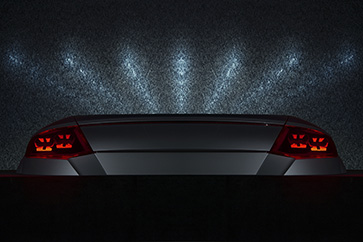
It is hard to believe that roughly 10+ years ago LED technology first started to migrate and become popular in the automotive industry.
Over the past few years though, there have been some incredible advancements within the automotive LED lighting industry, as well as the LED industry in itself.
Aside from the aforementioned advancements with automotive LED lighting and related optics, components, and circuitry; there have been other major advancements such as the all new OLED technology.
Similar to when LED technology research and findings first came out in the 1960’s, so did some of the very same related research in OLED technology, more specifically, the electroluminescence characteristics discovered in organic materials. This scientific break through happened in the early 1950s by André Bernanose and co-workers at the Nancy-Université in France. From there, Martin Pope and some of his co-workers at New York University developed ohmic dark-injecting electrode contacts to organic crystals in 1960 and kept on with their research and discoveries through the 60’s. Fast forward 25+ years later to 1987 where Ching W. Tang and Steven Van Slyke at Eastman Kodak invented the first OLED technology was implemented into the first ever OLED device, with further work into polymer electroluminescence conducted by J. H. Burroughes at the Cavendish Laboratory in Cambridge
Currently, OLED technology is just starting to make it’s way into the automotive scene in the form of OLED displays for cars, internal OLED ambient lighting, and OLED tail lights. To this day, OLED has yet to be incorporated efficiently with automotive head light applications as this is due to a wide variety of concerns, issues, constraints, and regulations. That being said, we are sure it will only be a matter of time before we start seeing OLED technology become more prevalent within the automotive industry.
Source: https://en.wikipedia.org/wiki/OLED
Automotive Laser Lamp Headlights
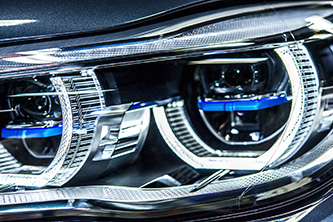
Back around 2014, BMW and Audi were competing over who was going to be the first automaker that was going to release the first production vehicle with OLED tail lights, other automotive OLED lighting and displays, and the biggest part of the competition; the state of the art laser lamp headlight system.
Well, BMW won the laser headlight battle by being first to market with a set of these space age lights outfitted on the brand new 2014 BMW i8. Audi followed suit shortly there after by launching their limited Audi R8 LMX with a set of powerful automotive laser spotlights for driving at high speeds in low visibility conditions.
Source: https://en.wikipedia.org/wiki/Laser_lamp
Off-road LED Lights Reviewed
Now, we understand we covered a lot of ground in this article about the history and evolution of the different types of automotive lighting technologies. We wrote this article as we wanted to share as much information as we could explaining the drastic positive benefits of purchasing a set of high performance off road LED lights when compared to the likes of other types of automotive lighting systems.
As you can see, every type of automotive light is built differently, to different specs, and for different applications. The final selection of purchasing your perfect set of premium off-road lights comes down to your personal preference, your due diligence and research, and how well you can compare and compute the many different options of off-road lighting. This is the only surefire method to ultimately get the most bang for your buck, on a product that you actually desire.
Click here to shop our selection of 4×4 race ready, performance grade, military rated, and extremely high quality LED Off Road Lights.
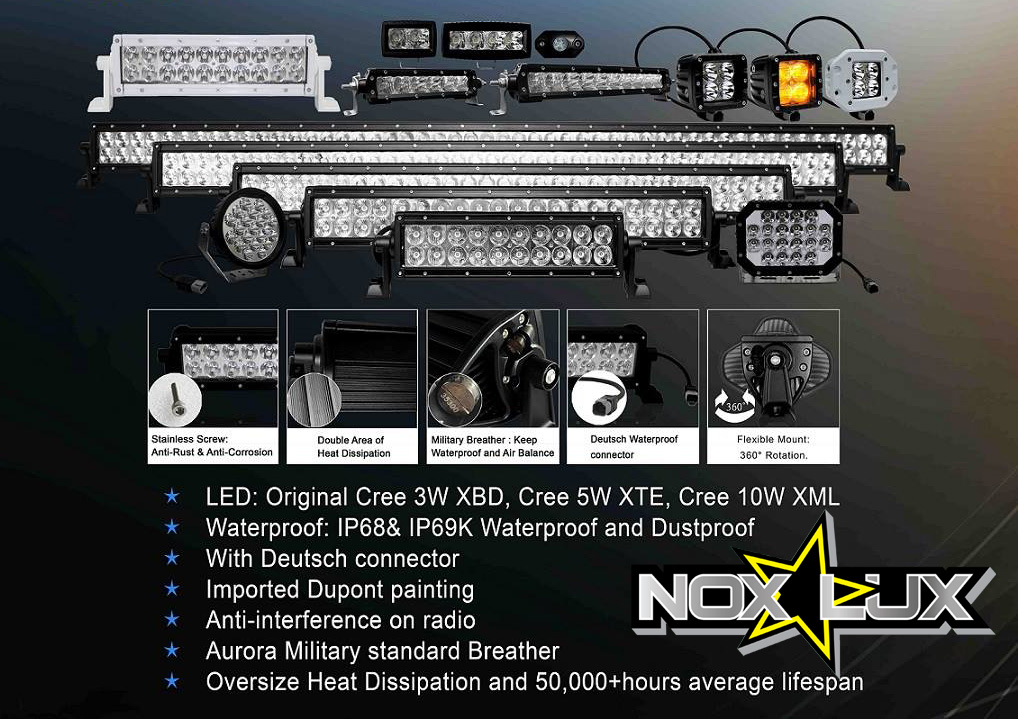
Stay Tuned for Our Next Article In Our Article Series Explaining Automotive Off-road Lighting Systems…


